Disrupting for Good: AI, ...
Online Conference
28 Jan 2026 / 29 Jan 2026 read more


Président of Sidi Mohamed Ben Abdellah University - Fes (USMBA), Morocco
Marwa Eid
Conference Coordinator
[email protected]
(+20) 3 5763827 | (+20) 3 5763828
(+20)1000028021
Subscribe to our newsletter
The 7th-Edition of the International Conference “Cities’ Identity Through Architecture & Arts” was held in collaboration with the University Sidi Mohamed Ben Abdullah University – Fes, Morocco. and took place virtually from 26 – 27 September 2023.
The Conference offers an interdisciplinary forum in the fields of Architecture, Cultural Heritage, Andalusian Arts, Cities Identity, Built Heritage, City Planning, Shaping Cities, Islamic Architecture, Heritage Preservation, Historical Sites, Historical Architectural, Architecture & Art, and Baroque Architecture, among many others.
The conference covered a wide array of topics that pertain to the Cities' Identity and Andalusian Art. Some of the main topics that were discussed include:
Day 1:
Welcoming session:
The Opening Ceremony started with the online registration and welcoming speeches from the Conference Chair and IEREK’ founder.
First Presentation about IEREK introducing IEREK as a company and its activities to the audience.
Following IEREK’s introduction, short welcoming speech were given by the conference chair Prof. Mustapha IJJAALI President of Sidi Mohamed Ben Abdullah University – Fes, Morocco.
Plenary Session:
A Plenary session followed introducing the first keynote speaker Prof. Monica M. Marcos, Phd in Conservation and Restoration of Heritage, Polytechnic University of Madrid, whose Speech was entitled: “Urban Planning of Ancient Egypt to Italian Medieval City Globalization”
After the Keynote Speech was the First Session of the conference titled “The Future of Our Past: Conservation of Identity in Contemporary Architecture & Arts” The Session was Moderated by Prof. Stefania Crobe, University of Palermo, Italy and Prof. Giovanna Ramaccini, University of Perugia, Italy The session had nine presentations before a short break.
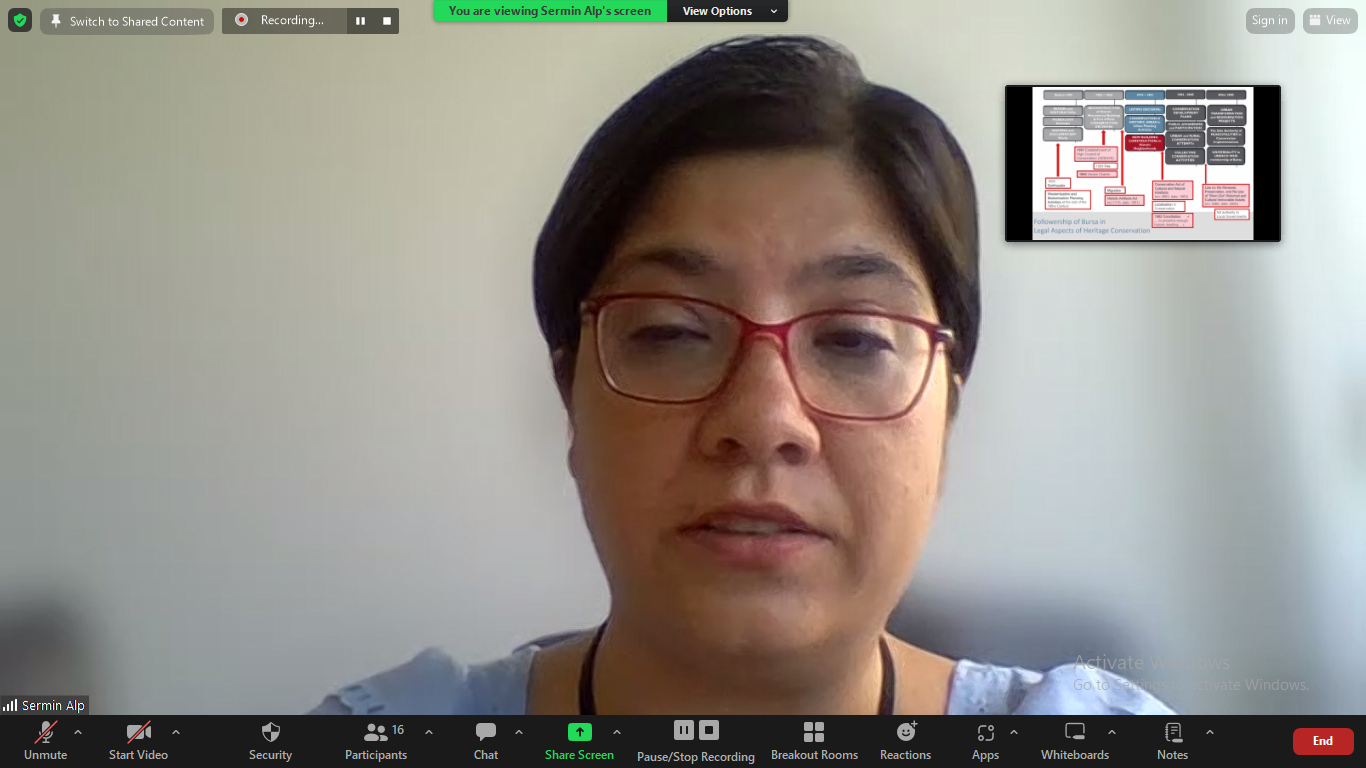
After the short break it was followed by introducing the second keynote speaker Dr. Eliana Martinelli, Assistant Professor at the University of Perugia, Italy whose Speech was entitled “Cities of the Islamic world: Design between Conservation and Transformation” and the third keynote Prof. Eiman El Gewely, Assistant Professor of Interior Design College of Architecture, Art, and Design, Virginia Tech, whose Speech was entitled “The Future of Our Past: Cultural Heritage and Digital Technology”
After the Keynote Speech was the Second Session of the Conference entitled “Special Issue: Andalusian Art and Architecture” The Session was Moderated by Dr. Sara D’Addario, University of Ferrara, Italy and Dr. Ludovica Mariano, University of Florence Italy Four presentations were discussed during the second session and concluded the first day of the conference.
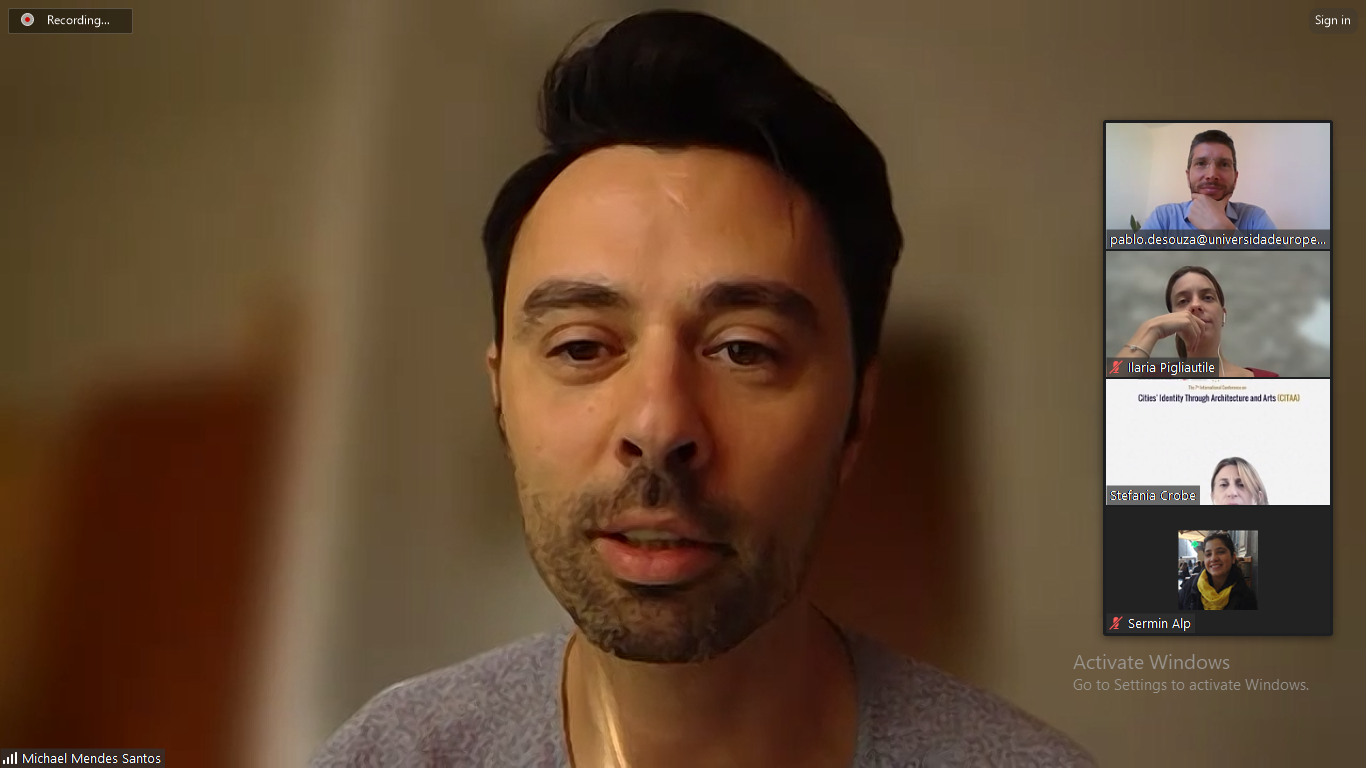
Day 2:
The Second day of the conference started with introducing the fourth Keynote speaker Prof. Pabalo Miguel De Souza Sanchez, Phd Architect and Professor at the School of Architecture of the European University of the Canary Islands whose speech was entitled “Qualifying the Palette of the Urban Ecosystem of Creativity in Shaping Sustainable Communities”
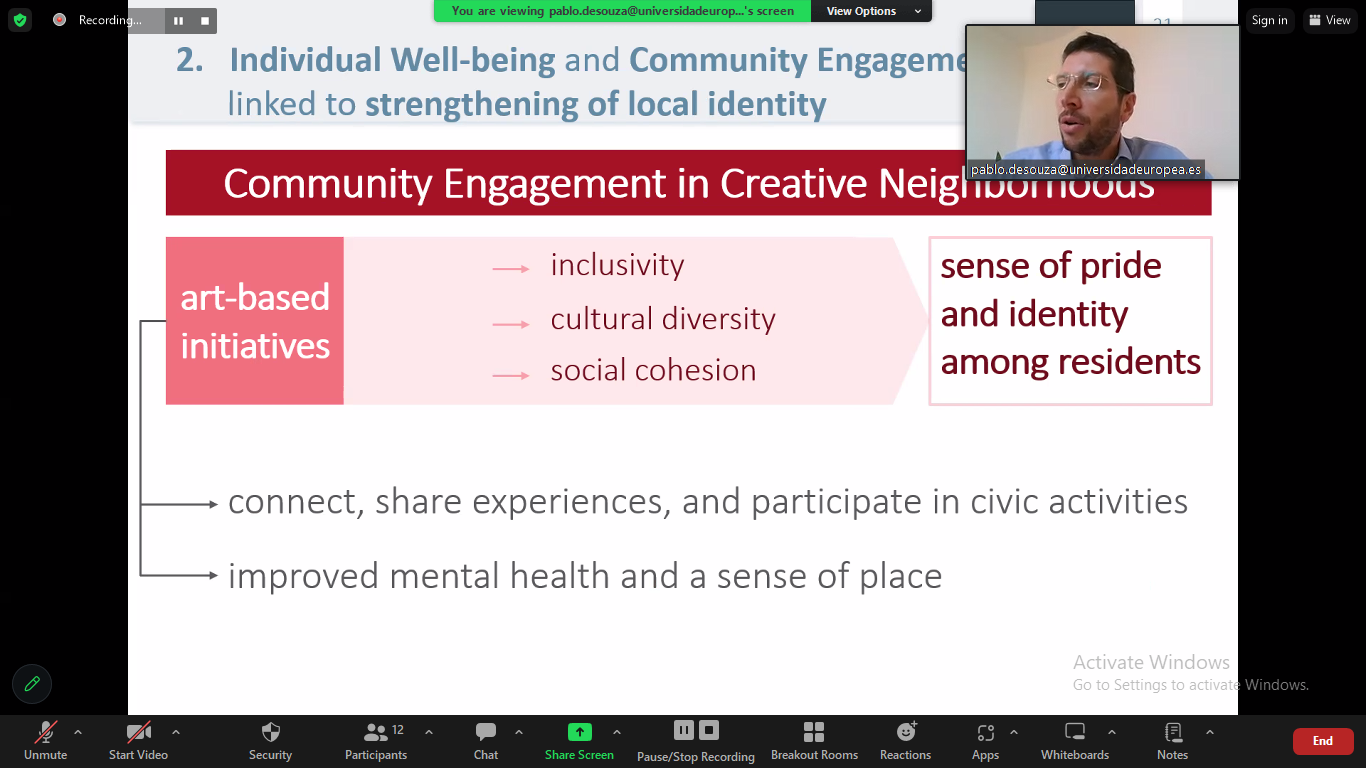
After the Keynote speech, the third Session entitled “Urban Sustainable Identity” The Session was Moderated by Prof. Stefania Crobe, University of Palermo, Italy and Prof. Ilaria Pigliautile, University of Perugia, Italy The session had eight presentations before a short break.
After the short break it was followed by starting the fourth session which was entitled “The Influences of Architecture and Arts on Shaping Cities” The Session was Moderated by Dr. Sara D’Addario, University of Ferrara, Italy and Dr. Ludovica Mariano, University of Florence Italy the fourth and the last session discussed eight presentations.
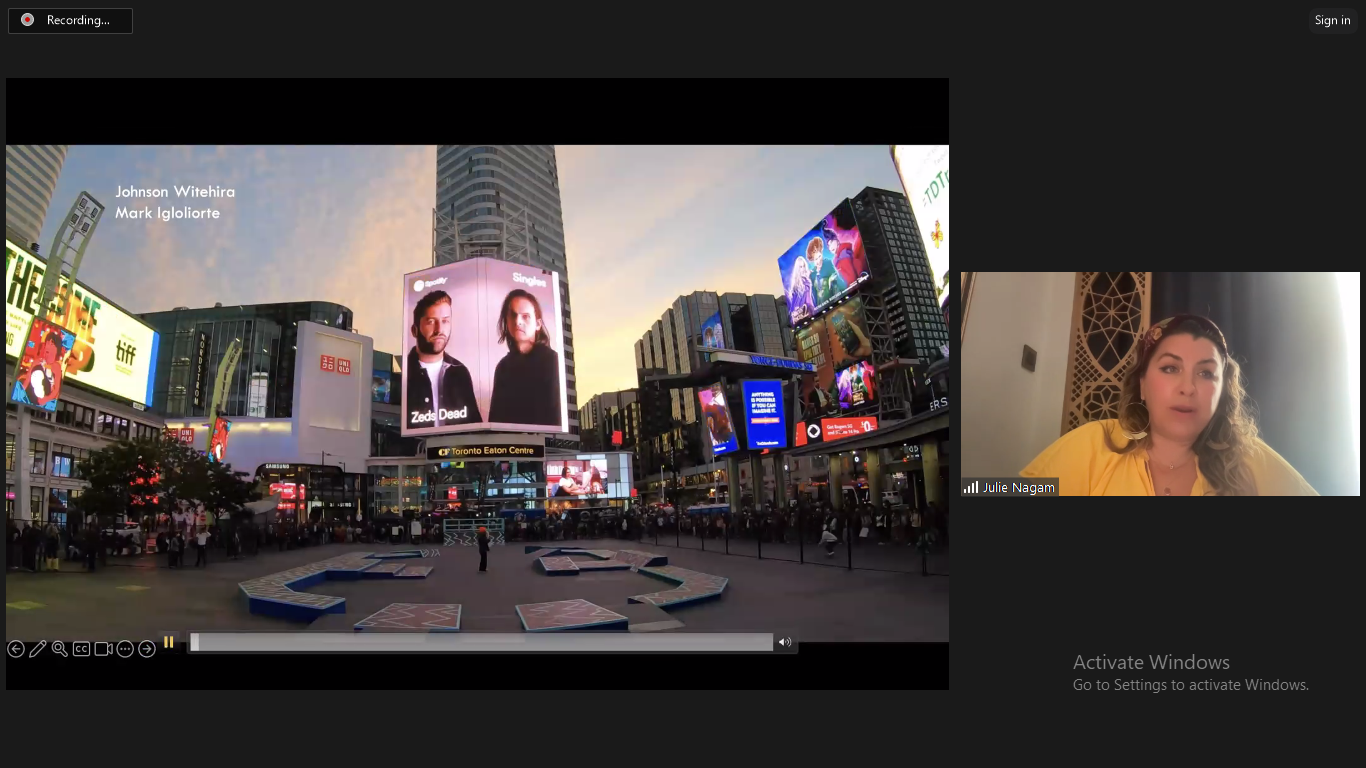
Wrapping up, a discussion and a Questions and Answers session followed by the final remarks and a closing ceremony was held, and the conference was concluded after feedback was discussed in the session.
The discipline of architecture is as old as humanity itself. Throughout human history, we have looked for safety and shelter, whether it be from storms and natural disasters, or predators. In the primitive ages, houses and constructions served merely as protection from external threats, as time passed, however, we have grown more sophisticated, and architecture has evolved to be an art form through which cultures express their identity, and present the beauty of their structures to the world, that they may look on in awe and wonder.
Historical structures of ages long past stand tall to this day, illustrating the stories of their ages, and inspiring modern architects. Stretching far back to around 3000 BC, when the ancient Egyptians left their mark on human civilization by constructing architectural marvels such as the pyramids & the Sphinx, and numerous temples spreading throughout Egypt. Quite a bit forward in time, during the fruition of the Islamic golden age in Al-Andalus, the Mosque-Cathedral of Córdoba (locally known as Mezquita-Catedral), sat at the heart of Al-Andalus’ capital, Córdoba, and still stands today in Spain as one of its major historic monuments, and a UNESCO World Heritage Site. Scholars of the period have noted the influence of the great mosque’s construction on modern-day architecture in the Mediterranean region, particularly Morocco, Algeria, and Tunisia. Elements of Moorish and Islamic architecture often incorporate calligraphy on the structure’s walls, immortalizing their language and vocabulary, still present in the mosques of today.
In relatively modern times, the advent of Baroque architecture originating from Italy in the 16th Century presents resplendent constructs throughout all of Europe. The architectural style arose in the counter-reformation period, as the catholic church needed to maintain its grip across Europe against the protestant reformation. Prominent landmarks that incorporate the baroque style include St. Paul’s cathedral in London, which remained the tallest building in London from 1710 until 1963, and the Karlskirche in Vienna, which features gorgeous imagery painted across its walls.
All of these ancient styles of architecture did not simply dictate a practical method of stacking wood and stone, they were meant to convey a message, an emotion that could not be put into words. Imagery that inspires, calligraphy that immortalizes language and vocabulary, and complex construction techniques that incorporate smooth curvatures and tricks of the light. These unique elements inspire the masses, and stand to enlighten modern-day architects and artists, pushing them to surpass their ancestors, and further refine the art of architecture.
Historical marvels that evoke emotions in all of us, should be maintained and preserved. They must endure timely degradation, everlasting through the generations, for their value to inspire, and the sense of pride they spur within nations is invaluable. To this end, IEREK is organizing the 7th edition of “Cities’ Identity through Arts and Architecture”, where experts from all fields, including architects, engineers, historians, artists, and psychologists, will present innovative techniques that aim to preserve historical landmarks that fascinate and resonate, through future generations.
Scope
The “Cities Identity through Arts and Architecture” conference envelops topics concerning the conservation of cities’ identities through arts and architecture. It addresses multiple topics of contention concerning cities’ heritage and conservation efforts, such as the influence of artistic expression and creativity on cities’ safety, traditional artistic techniques & architecture, historical eras, and their construction practices, and sustainable preservation practices. The conference additionally highlights a special issue that deliberates upon Andalusian art and architecture, and its everlasting influence on contemporary architectural practices in the Mediterranean region, through Moorish and Arab constructions.
Statement of Purpose
Set in culturally rich Morocco, the 7th edition of CITAA intends to develop a healthy discourse surrounding the topic of heritage preservation, and the maintenance of cities' identities in an increasingly evolving world. Historical architectural marvels and traditional cultural norms are wells of inspiration, that younger generations can reflect upon and be inspired, iterating upon the works of their forefathers, and leading their nation forward. This conference aims to highlight sustainable methods of heritage & identity preservation and the significance of historical dimensions in shaping contemporary design.
1.1 The Nurturing Humanitarian Influence on the Arts
1.2 Creating Human-Centric, Resilient Cities
1.3 Archaic, and Modern Mediums of Art Conveyance
1.4 The Strong Links between Economic Strength and Art Vibrancy
1.5 Art’s Influence on the Safety of Cities
1.6 Technological Advancements & Interactivity in Modern Architecture & Art
2.1 The Ingenuity & Mysteries of the Pharaonic Era
2.2 The Islamic Golden Age, and Andalusian Art & Architecture
2.3 Moorish and Islamic Styles of Architecture and Their Incorporation of Vocabulary & Calligraphy
2.4 Baroque Architecture and its Incorporation of Art & Painting
2.5 The Influence of Baroque Architecture & Art on Modern Europe
2.6 The Interrelatedness of Past & Present Art Forms
3.1 Historical Innovative Techniques in the Art of Architecture
3.2 The Impact of Architectural Vocabularies on The City’s Identity
3.3 The Progression of the Art of Architecture Through Time
3.4 Religion’s Historical Role in the Shaping of Cities & Structures
3.5 The Evolution of Artistic and Architectural Vocabulary Over Generations
4.1 Cultural Heritage Protection, Conservation, and Adaptability
4.2 The Role of Architecture & Arts in Heritage Preservation
4.3 The Past’s Inspirational role of Shaping Contemporary Architecture & Art
4.4 Public Perception of Architectural Identities & Arts
4.5 The Cultural and Historical Dimension to Conserve Identity in Contemporary Designs
5.1 Adaptability & Conservation of Cities’ Identities
5.2 Preservation of Historical Sites and Cultural Heritage
5.3 Governmental Duties & Guidelines for Sustainability
5.4 Departing from Car-centric Design, and the Integration of Public Transit
5.5 Composing a Green & Accessible Landscape for Historical Architectural Landmarks
6.1 Modern Exemplars of International Appreciation & Tourism Attraction
6.3 Economic Growth as a Direct Cause of Heritage Preservation
6.4 Creation of Tourist Friendly Landscapes & Interfaces
6.5 Artistic Development and Touristic Attraction
6.5 Modern Development Techniques for Sustainable Tourism
6.6 Social Inclusion in Public Spaces
6.7 Integration of Digital Technology in Historical Sites
7.1 The History of Al-Andalus & its Architectural Vocabularies
7.2 The Geometric Concept and Golden Ratio in Andalusian Art
7.3 The influences of Religion in Historical Architectural Development
7.4 Architectural & Artistic Development in Al-Andalus
7.5 The Incorporation of Calligraphy in Architecture, and the Immortalization of Language
7.6 An Emphasis on Greenery and Landscape Shaping as Early as the 12th Century
All accepted submissions to the conference, after a rigorous double-blinded peer-review process by the respective and a highly-extinguished Editorial Board, will be published in one of the following:
 Advances in Science, Technology and Innovation (ASTI), an IEREK Interdisciplinary book series published by Springer Nature. (Scopus indexed)
Advances in Science, Technology and Innovation (ASTI), an IEREK Interdisciplinary book series published by Springer Nature. (Scopus indexed) About ASTI
Advances in Science, Technology & Innovation (ASTI) is a series of peer-reviewed books based on important emerging research that redefines the current disciplinary boundaries in science, technology and innovation (STI) in order to develop integrated concepts for sustainable development. It not only discusses the progress made towards securing more resources, allocating smarter solutions, and rebalancing the relationship between nature and people, but also provides in-depth insights from comprehensive research that addresses the 17 sustainable development goals (SDGs) as set out by the UN for 2030.
The series draws on the best research papers from various IEREK and other international conferences to promote the creation and development of viable solutions for a sustainable future and a positive societal transformation with the help of integrated and innovative science-based approaches. Including interdisciplinary contributions, it presents innovative approaches and highlights how they can best support both economic and sustainable development, through better use of data, more effective institutions, and global, local and individual action, for the welfare of all societies. The series particularly features conceptual and empirical contributions from various interrelated fields of science, technology and innovation, with an emphasis on digital transformation, that focus on providing practical solutions to ensure food, water and energy security to achieve the SDGs. It also presents new case studies offering concrete examples of how to resolve sustainable urbanization and environmental issues in different regions of the world. Read More.
The ASTI series is fully indexed in Scopus and any chapter/ paper published as part of this series will be seen on the Scopus database. Some titles have been successfully indexed or submitted for indexation in Web of Science (ISI).
|
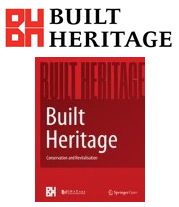 |
About Built Heritage Journal
Built Heritage aims to enhance pluralism and criticism in debates on heritage conservation and revitalization with a globalized perspective. The conceptual basis of this refereed journal lies on the fundamental cultural differences concerning built heritage conservation, recognizing these differences as a source for creativity and a motivation for cutting-edge experimentation. It fosters scientific exchange between Chinese and international scholars and practitioners, offering a platform to record the latest developments in the field. Encouraging international authorship and evaluation, it allows for the homologation of research and practice with regards to cultural diversity.
Built Heritage promotes the awareness for built heritage conservation in China and internationally, inviting scholars to reflect on current hot topics discussions as: the role of contemporary architecture in historic environments; the balance between conservation and development; new tools of heritage management; policy, culture and identity; energy consumption and sustainability.
 IEREK Press Journals, a multidisciplinary publisher that aims to cultivate and disseminate research.
IEREK Press Journals, a multidisciplinary publisher that aims to cultivate and disseminate research.
ESSD is a peer-reviewed, scholarly journal that aims to systematically develop the research-driven curiosity and evidence-based discourse of aspiring scholars that seek to contribute to the academic community. As the world is currently living in an age of information where sources are widely available on the Internet, we at ESSD seek to efficiently utilize the available information to help create robust and evidence-based knowledge. In the process, we offer researchers, in general, and young and aspiring ones in particular a quicker way to get their work published and gain exposure through online open access. We pride ourselves on getting submitted work to be published quickly, through the use of our worldwide pool of subject specialist peer reviewers. Find out more about ESSD International Journal here.

ARChive is an open-access journal that publishes conference proceedings on a wide range of topics relating to social sciences. Consequently, it accepts original research papers on a wide spectrum of subjects. ARChive is a journal published on behalf of researchers that perpetually make an effort to contribute to their fields and provide them with high visibility of research submitted. The series publishes, both, theoretical and experimental high-quality papers of current and perpetual interest. It serves to cultivate, propagate, and essentially archive academic research that has been authored and submitted for academic conferences.
Find out more about ARChive International Journal here.

Resourceedings is an open access journal that publishes conference proceedings. Conference proceedings compromise of different disciplines, ranging from Engineering including built environments, architecture, and sustainability. Disciplines also include Technology and Energy. Resourceedings is a journal that publishes research articles that shed light on different crucial issues in order to provide them with solutions and suggestions. The journal publishes articles submitted by researchers of interest in different fields.
Find out more about Resourceedings International Journal here.
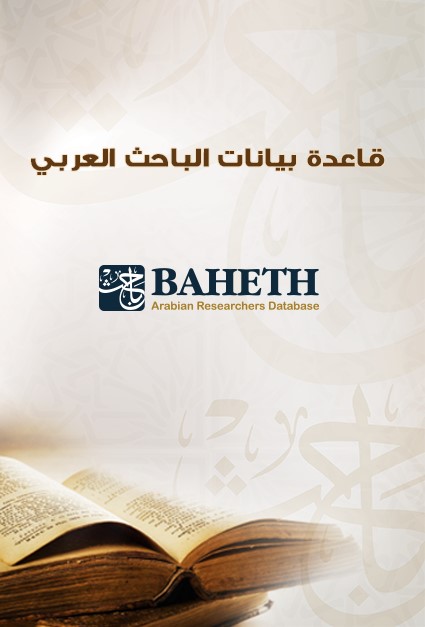
“BAHETH” in Architecture, Engineering, and Technology, is a peer-reviewed journal that publishes original academic research in the fields of Architecture, Engineering, and Technology. The journal welcomes research in the Arabic Language with an English Abstract. Papers submitted to this journal in Arabic must be presented in the English Language in the conference.
Find out more about BAHETH International Journal here.
| Title | Date |
|---|---|
| Abstract Submission Deadline | 20 Aug 2023 |
| Last Notification for Abstract Acceptance & Approval to present | 25 Aug2023 |
| Regular Payment Deadline | 30 Aug 2023 |
| Extended Abstract / Short Paper Submission Deadline | 15 Oct 2023 |
| Notification of acceptance/ rejection of submitted extended abstract/ short paper | 30 Oct 2023 |
| Late Payment Deadline | 16 Sep 2023 |
| Conference Program | 26 Aug 2023 |
| Conference Launch | 26 Sep 2023 |
| Student / partner university only | Academic | Professional | Deadline | |
| *ID must be shown | *Affiliation must be provided | *Affiliation must be provided | ||
| Author Participation (Consideration in the ASTI Book by Springer) | ||||
| Regural Pay,ment |
300 € | 350 € | 400 € | 30 Aug 2023 |
| Late Payment |
350 € | 400 € | 500 € | 16 Sep 2023 |
| Author Participation (Consideration in the IEREK Press Journal) | ||||
| Regural Payment |
200 € | 250 € | 300 € | 30 Aug 2023 |
| Late Payment |
250 € | 300 € | 400 € | 16 Sep 2023 |
| Co-author/ Audience | ||||
| Regular Payment | 150 € | 200 € | 250 € | 30 Aug 2023 |
The fee covers:
The conference Kit inclusive of: a printed abstracts book, a softcopy of the abstracts book on a USB/CD, Conference notebook, IEREK pen, Conference Flyers/ Printouts.
IEREK Participation/ Contribution Certificate
Preliminary Acceptance Letters
Consideration for publishing in the IEREK ASTI series by Springer or IEREK Press
Lunches and Coffee Breaks
If multiple abstracts are submitted by the same first author submitted to the conference, a 25% discount is applied to each additional submission.
Each research paper should have one main author who should pay the full fee (Author fees) regardless of attendance. Co-authors, each, have their own fees to pay to attend the event. This applies to online attendance as well as physical attendance.
A research paper fee allows only one author, whether main or co-author, to attend the conference and receive only one copy of the conference Abstract book in both hard and soft copies. Extras can be requested for an additional fee.
Professionals are categorized as participants who are not affiliated with universities such as practitioners, policymakers, entrepreneurs etc.
Students must provide proof of enrollment in a university by providing an enrollment certificate or a valid university ID (with issue/ expiry date) etc.
|
*Authors may request that their kits be delivered, for an additional fee decided by the courier, and upon request. Alternatively, authors located in Egypt can pick them up from Cairo/ Alexandria office. |
|
|
Additional Conference Kit (Excluding Delivery) *Contact us for a quotation on shipping fees. |
100 € |
Loyalty Membership Discounts
The more you attend, the more you're rewarded!
IEREK offers its loyal participants with the following discounts depending on his/her attendance:
|
Attendance |
Second |
Third |
Fourth |
Fifth |
|
Discount |
5% |
10% |
15% |
20% |
*The aforementioned discounts are only applicable during Regular and Late Payment times. For more information, please refer to 'Important Dates'.
Payment Methods
Payment of the registration fee can be made via the following methods (only after online registration):
1. Bank transfer
Kindly send a request to the conference coordinator/ email and CC [email protected] to receive bank details to complete the payment.
2. Online payment gateway (PayPal)
Participants who would like to complete their payments online must send a request to the conference coordinator/ email and CC [email protected] to receive a customized link to complete their payments.
3. Cash in IEREK branches
Payment in person can be arranged. Please contact the conference coordinator/ Email to receive further information.
Payment Terms and Guidelines:
The Confirmation/Payment Completion period will take place from 20 May 2023 to 20 Sep 2023. Regular payment discounts are available till August 2023. Read more on Important Dates. For information on payment dates, kindly send a request to the conference coordinator/email and CC [email protected] to receive payment details to complete the payment.
Authors who have registered and completed payment for virtual attendance CAN request a change to physical attendance. However, a change from physical to virtual is NOT possible.
After online registration and payment, the registration fee cannot be reimbursed.
Final Acceptance/ rejection of your full/ extended paper (if submitted) can only be given after the peer review process.
Inclusion in the conference program, acceptance letters issuance and consideration for publication must be preceded by registration and payment completion.
Online Payment (only) should only be completed once a proforma invoice is issued with respective instructions for successful payment.
Contact our Financial Department for inquiries/ requests.

Dr. Eiman Elgewely is an Assistant professor of Interior Design in the School of Design at Virginia Tech and a Faculty Affiliate of the Center of Human-Computer Interaction (CHCI). Her MFA and Ph.D. in interior architecture from Alexandria University are in the Virtual and Cyberspace design field. Dr. Elgewely joined the Experiential Technologies Center, School of Art and Architecture, University of California Los Angeles (UCLA) in 2013 as a Fulbright Postdoctoral fellow. Her research interests are in digital cultural heritage and museum studies. She has worked on several applied projects in Digital Cultural Heritage in Egypt since 2007, including 3D scanning, documentation, and virtual reconstruction of historical sites. She currently leads several digital heritage projects as the founding director of the Visualization and Virtual Reality Lab (VVL) in the School of Design at Virginia Tech.

Dr. Pablo is an Accredited Hired Doctor Type 1 (ACCUEE), Doctor with International Mention (UPM, 2017), Master in Analysis, Theory and History of Architecture (UPM, 2012), Architect (UEM, 2009) and Bachelor of Fine Arts (ULL, 2000) specialized in Graphic Arts at the Academy of Fine Arts in Antwerp, Belgium. His doctoral thesis entitled The Fold in Architecture is a historical, critical, conceptual and experimental study of the application of origami patterns in architecture. Dr. Pablo is a slo Member of three Research Groups: AIRLab (Architectural International Research Laboratory of Cities Design Institute Research Group) at UEM, ADTS (Architecture and Sustainable Tourism Development) and EIIG (Integrated Management Innovation Studies) at UEC. He has participated in three R + D + i projects (1 international and 2 national). And he has made 34 publications: 3 articles (2 indexed in Avery, 1 in Scopus Q3), 2 book co-editions, 7 book chapters (5 SPI Q1), 10 presentations at international conferences, 5 publications of works (1 indexed in Avery), and 7 articles in newspapers.
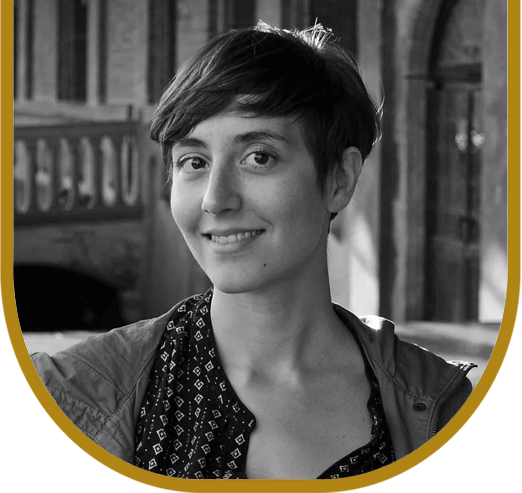
Eliana Martinelli (1987) is an architect and researcher. Since 2012, she has carried out academic and professional research in Italy, Germany, Turkey and Morocco; furthermore, she has also been involved in several designs that won international competitions. In 2017, she completed a PhD in Architectural Composition with honors at the IUAV University of Venice, with the first dissertation in Italy on the work of the Turkish architect Turgut Cansever, later published in the book Recomposing Unity. Turgut Cansever in Istanbul (2022). She has held teaching positions at the Université Euro-Méditerranéenne de Fès (Morocco), SRH Hochschule Heidelberg (Germany), University of Pisa, University of Florence and Federico II University of Naples. She is a member of the Dar_Med research unit (University of Florence), where she works on architectural and urban design in the Euro-Mediterranean area, especially Turkey and the Maghreb. She also promotes and coordinates design workshops and participates in international conferences and seminars. Finally, she is a member of the DAAD-funded Learn[IN] project, part of the «Hochschuldialog mit Südeuropa» research program. Martinelli has published numerous essays in international volumes and journals and she is the co-founder and member of the editorial board of DAr, international biannual journal of architecture in the Islamic world. From 2019 to 2022, she was a research fellow at the University of Florence in the field of architectural and urban regeneration, specializing in memory and involvement of communities in the enhancement of tangible and intangible heritage, before moving to the Department of Civil and Environmental Engineering at the University of Perugia in Italy in late 2022 as an Assistant Professor.
Important Note:
IEREK has an unyielding policy regarding plagiarism. We believe that copying/taking the ideas and work of other Authors without permission and credit is fraudulent. The Reviewing committee and IEREK employees have the authority to reject a paper during its reviewing process, on the basis of the paper being subjected to either minor or major plagiarism.
Authors must refer to, and abide by, the following instructions in submitting their abstracts/ papers:
This is not a prerequisite for presenting your work at the conference. Meaning, you can present your submitted abstract without intending to publish your work.
This process can only be initiated after payment completion and confirmation:
Registration
To help the organizers plan for inter-disciplinary dialogue, participants are requested to choose from the conference themes/ Topics upon registration.
They must also refer to, and abide by, the following instructions in registering and/ or submitting their contributions:
NOTE: If you are contributing as an Author of a submitted abstract (for publishing consideration and/or presentation), and regardless of attendance, the fee for the registration is the same. See and Conference Fees for more information.
Types of Participation
1. Attend/ Present Online and Publish in indexed Conference proceedings
The conference offers an Online attendance option for your convenience. That said, participants will have a chance to present their abstract/research, online, and have their work considered for publication in the ASTI Series by Springer as part of the conference proceedings.
See Author Instructions and Conference Fees for more information.
2. Registration to publish in the proceedings without presenting/ attending
If your full paper is accepted, it may be published in the conference proceedings book in the Advances in Science, Technology & Innovation Book Series by Springer (indexed in Scopus) even if you are not attending the conference. In this case, the accepted work will not be included in the final conference program. See Author Instructions and Publishing Opportunities for more information.
3. Non-presenting participant
Non-presenting participants may also wish to attend the conference as Audience Members or Co-authors contributing to an already submitted abstract/ paper. See Conference Fees for more information.
Notes to consider:
Send in your questions if you have any to the conference coordinator at the email [email protected]
For IEREK's Provious Publications, Please Click here
- Cities' Identity through Architecture and Arts (CITAA) – 1st Edition held in Cairo, Egypt in May, 2017.


- Cities' Identity through Architecture and Arts (CITAA) – 2nd Edition held in Cairo, Egypt in September, 2018.
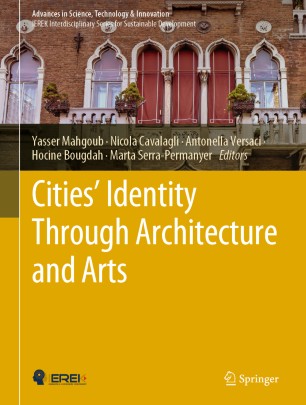

- Cities' Identity through Architecture and Arts (CITAA) – 3rd Edition held in University of Pisa, Italy in September, 2019.
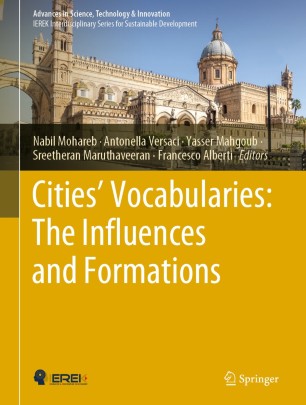
- Cities' Identity through Architecture and Arts (CITAA) – 4th Edition held online in collaboration with the University of Pisa, Italy in December 2020.
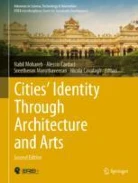
- Cities' Identity through Architecture and Arts (CITAA) – 5th Edition held online in collaboration with the University of Pisa, Italy in December 2021.

BAHETH International Journal - Arabian Researchers Database (Arabic Papers only)
Click here to read more about the BAHETH international journal.
*Submitted abstracts in the Arabic language must be translated to English prior to submission. Papers Submitted to this journal in Arabic must be presented in the English language in IEREK conferences.

Prof. Radouane MRABET is the President of the University Sidi Mohamed Ben Abdellah of Fez since June 2018. He is also the President of the Internet Society Morocco Chapter and the Vice President of the Foundation "Esprit de Fes". He received the title of Emeritus Professor from Mohammed V University in Rabat on December 21 2017 Prof. Radouane Mrabet has been appointed in January 2019 to the Board of Directors of the Naif Arab University of Security Sciences (Saudi Arabia Kingdom). He is the former President of the University Mohammed V - Souissi (2010 -2014). He served also as Director of Ecole Nationale Superieure d'Informatique et d'Analyse des Systemes - ENSIAS (2007 - 2010). Prof. Radouane Mrabet received his PhD in June 1995 from Universite Libre de Bruxelles, Brussels, Belgium in the field of Communication Networks. He received a Master degree in July 1987 from Pierre & Marie Curie University, Paris - France, in the field of Computer Systems. Finally, he is an Engineer from Ecole Mohammadia d'Ingenieurs, Mohammed V University, Rabat - Morocco, also in the field of Computer Systems.

Prof. Akdim Brahim was a member of the management board of Sidi Mohamed Ben Abdellah University (2012), Elected member of the scientific council of CNRST Rabat (2011), Member of joint committees of USMBA, Member of the national equivalence committee (Rabat) and Visiting Professor at the University of Metz (1999, 2001, 2002). He supervised several State doctorate and doctoral theses, defended or in progress. He had chaired or participated as rapporteur or member of thesis or examination juries for habilitation work supported in Morocco and France. member of the team working on the archaeological site of Saddina (a collective work was published following this work) Member of the research team working on updating the national plan to combat desertification within the framework of the sustainable land management research association (Rabat). A collective work was published in this context (2017); Member of the SEGRIES study project team (Sebou water management system), integrated action financed by the Franco-Moroccan joint committee and presented by teams from the universities of Fez and Metz), Member of the working on the project "Spatialization of poverty in the Prerif, Taounate". ONDH/USMBA research contract (2009); -Coordinator of the project “Urban growth and hydrological risks” (CNRS PARS Geo2 projects, Ministry of Higher Education, 1999-2003, Member of the Moroccan-Spanish integrated action team on solidarity tourism in the northern Middle Atlas. Integrated Action no. 67/04/P (Fez – Seville) 2005-2008. Prof. Brahim Akdim is a member of the editorial scientific committee of the international review Present environment and sustainable development (2010) of the review Arab Word Geographer in 2005, director of the interdisciplinary Review Geomaghreb and President of the National Association of Moroccan Geographers (ANAGEM between 2004 and 2007. The association publishes the specialized journal Revue de Géographie du Maroc.Member of the scientific committee of the RELOR competence center (research on the local and the regional) accredited by the Ministry (2007). Prof. Brahim Akdim was decorated with the Wissam of the Throne, Cavalier Grade "Fares" in 2007 and has benefited from honorary support in competitive scientific programs such as the Fulbright Research Scholarship, University of Houston and Clark University, USA (1993), the Excellence Scholarship from the University of Ottawa, Canada (1988) and a project supported by the National Science Foundation (University of Houston, 1994).

Rachid Benslimane is a Professor at Sidi Mohamed Ben Abdellah University (USMBA) in Fez, Morocco. Mr. Benslimane received his first Ph.D. in Physics from Montpellier University in 1985 and a second Ph.D., also in Physics, from Sidi Mohamed Ben Abdellah University in 1992. From 1993 to 2010, Dr. Benslimane led the Transmission and Image Processing Research Laboratory. From 2005 to 2013, Rachid Benslimane was the coordinator of the Moroccan research network on cultural heritage ‘Pôle de Compétence Patrimoine Culturel’. His research interests include image processing and analysis, pattern recognition, and content-based image retrieval. Over the past ten years, Dr. Rachid Benslimane focused most of his research on Islamic geometric art and developed expertise in Andalusian geometric art. Dr. Rachid Benslimane has supervised over twenty doctoral students and coordinated several studies and research projects, both in Morocco and internationally. He has also lectured in different academic and professional institutions and published over a hundred international papers.
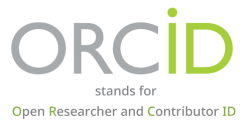
ORCID, which stands for Open Researcher and Contributor ID, is a global, not-for-profit organization that aims to provide unique identifiers for authors, researchers, and scholars. ORCiD effectively eliminates duplication and errors regarding author names, affiliations, previous works, and all related academic data.
IEREK is a proud member of ORCiD, and we contribute directly to their initiative of clear and identifiable markers for researchers and scholars. As the first Egyptian partner to ORCiD in the organization’s history, we strongly believe that by utilizing ORCiD’s database and verification services, we become one step closer to achieving an accurate, and identifiable academic landscape.
We encourage our authors to input their ORCiD ID when registering for one of our conferences, submitting an abstract, or a full paper. By doing so, you directly link your research to your identity and affiliation and can showcase your various academic efforts all in one place. By Registering your ORCiD ID, you also increase your works’ visibility and provide easy access to your entire library of research and academic activity.
Click here to learn more about ORCiD, and here to register your ORCiD ID for free.
Beside the online attendance, a special session will be hosted in parallel to the Urban Planning and Architectural Design for Sustainable Development (UPADSD) conference, taking place at the University of Florence, Italy from October 24th to 26th, 2023. We cordially invite CITAA participants to attend the entire UPADSD conference.
Furthermore, in addition to attending the CITAA conference online, all CITAA attendees are invited to a city tour with the conference chair, Professor Francisco Alberti, to visit the Piazza of Santa Maria Novella and discuss its influence on the city's image.
The full program will be available on the UPADSD webpage, and a notification will be sent to all CITAA authors. You can also find the program on the following webpage:
https://www.ierek.com/events/urban-planning-architectural-design-for-sustainable-development-upadsd-8th#introduction
Attending conferences is very beneficial, especially, on the professional level; conferences are full of people promoting new ideas which will expand your knowledge and undoubtedly help your career.
Moreover, all conference papers are archived online in the E-Library of IEREK‘s website where they are immediately and permanently available to the international scientific community.
Delegates in any event who cancel their registration due to special circumstances will receive refunds according to the following:
| Cancellation Policy | Up to 60 days before the event | 59 days before the event |
| Penalty | 20% | 100% |
A refund is not possible if
- An acceptance letter has been issued (Authors only)
- The proceedings of the event have been published (Authors only)
- A submitted manuscript is rejected by the editorial board after going through peer review.
The print ISSN number of the International Conference on "Cities' Identity Through Architecture and Arts (CITAA)" is
The online ISSN number of CITAA conference is
The 7th-Edition of the International Conference “Cities’ Identity Through Architecture & Arts” was held in collaboration with the University Sidi Mohamed Ben Abdullah University – Fes, Morocco. and took place virtually from 26 – 27 September 2023.
The Conference offers an interdisciplinary forum in the fields of Architecture, Cultural Heritage, Andalusian Arts, Cities Identity, Built Heritage, City Planning, Shaping Cities, Islamic Architecture, Heritage Preservation, Historical Sites, Historical Architectural, Architecture & Art, and Baroque Architecture, among many others.
The conference covered a wide array of topics that pertain to the Cities' Identity and Andalusian Art. Some of the main topics that were discussed include:
Day 1:
Welcoming session:
The Opening Ceremony started with the online registration and welcoming speeches from the Conference Chair and IEREK’ founder.
First Presentation about IEREK introducing IEREK as a company and its activities to the audience.
Following IEREK’s introduction, short welcoming speech were given by the conference chair Prof. Mustapha IJJAALI President of Sidi Mohamed Ben Abdullah University – Fes, Morocco.
Plenary Session:
A Plenary session followed introducing the first keynote speaker Prof. Monica M. Marcos, Phd in Conservation and Restoration of Heritage, Polytechnic University of Madrid, whose Speech was entitled: “Urban Planning of Ancient Egypt to Italian Medieval City Globalization”
After the Keynote Speech was the First Session of the conference titled “The Future of Our Past: Conservation of Identity in Contemporary Architecture & Arts” The Session was Moderated by Prof. Stefania Crobe, University of Palermo, Italy and Prof. Giovanna Ramaccini, University of Perugia, Italy The session had nine presentations before a short break.

After the short break it was followed by introducing the second keynote speaker Dr. Eliana Martinelli, Assistant Professor at the University of Perugia, Italy whose Speech was entitled “Cities of the Islamic world: Design between Conservation and Transformation” and the third keynote Prof. Eiman El Gewely, Assistant Professor of Interior Design College of Architecture, Art, and Design, Virginia Tech, whose Speech was entitled “The Future of Our Past: Cultural Heritage and Digital Technology”
After the Keynote Speech was the Second Session of the Conference entitled “Special Issue: Andalusian Art and Architecture” The Session was Moderated by Dr. Sara D’Addario, University of Ferrara, Italy and Dr. Ludovica Mariano, University of Florence Italy Four presentations were discussed during the second session and concluded the first day of the conference.

Day 2:
The Second day of the conference started with introducing the fourth Keynote speaker Prof. Pabalo Miguel De Souza Sanchez, Phd Architect and Professor at the School of Architecture of the European University of the Canary Islands whose speech was entitled “Qualifying the Palette of the Urban Ecosystem of Creativity in Shaping Sustainable Communities”

After the Keynote speech, the third Session entitled “Urban Sustainable Identity” The Session was Moderated by Prof. Stefania Crobe, University of Palermo, Italy and Prof. Ilaria Pigliautile, University of Perugia, Italy The session had eight presentations before a short break.
After the short break it was followed by starting the fourth session which was entitled “The Influences of Architecture and Arts on Shaping Cities” The Session was Moderated by Dr. Sara D’Addario, University of Ferrara, Italy and Dr. Ludovica Mariano, University of Florence Italy the fourth and the last session discussed eight presentations.

Wrapping up, a discussion and a Questions and Answers session followed by the final remarks and a closing ceremony was held, and the conference was concluded after feedback was discussed in the session.




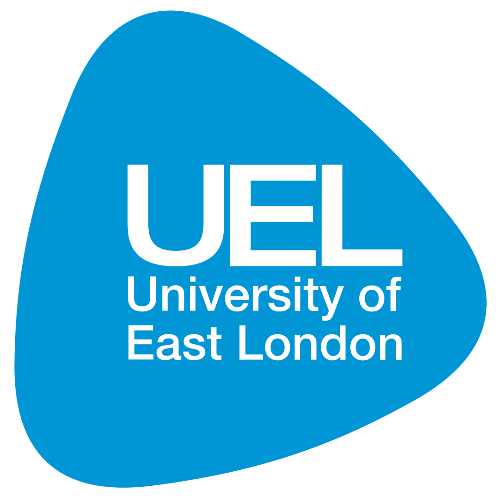







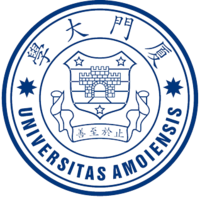

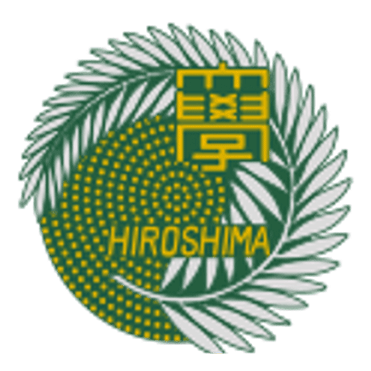
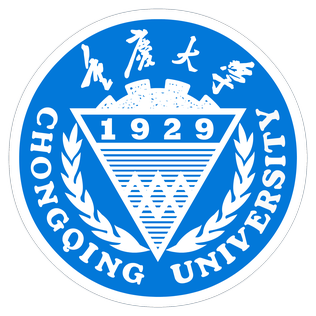
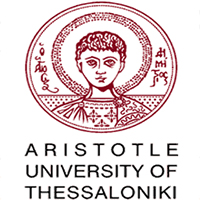
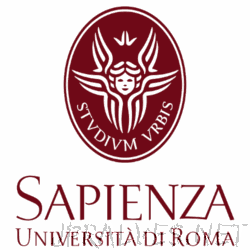
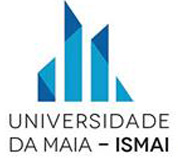



Président of Sidi Mohamed Ben Abdellah University - Fes (USMBA), Morocco
Marwa Eid
Conference Coordinator
[email protected]
(+20) 3 5763827 | (+20) 3 5763828
(+20)1000028021
Subscribe to our newsletter
Join IEREK community